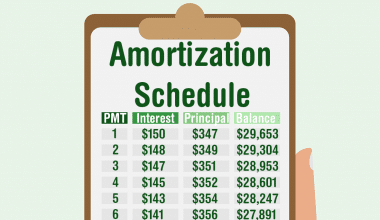When workers are able to give their full attention to their tasks, productivity increases. They come in good spirits and give their whole concentration to the task at hand. This is more common in companies that allow their workers to take paid time off for illness. Presenteeism can occur in the workplace if workers believe they must report for duty regardless of their health. Learn how to prevent presenteeism in the workplace and the difference between presenteeism and absenteeism. (Presenteeism vs Absenteeism)
What Is Presenteeism?
Presenteeism refers to the terrible scenario in which employees are unable to perform at their peak levels owing to a variety of factors such as illness, injury, or other ailments. This condition results in a considerable drop in workplace productivity. Even if someone is at their job, they may not be able to do their job well. As a result, they are more likely to make mistakes during their task. While people are well aware of absenteeism in the workplace, they sometimes neglect to consider the impact of presenteeism. Recent research, however, has shed light on the enormous costs associated with presenteeism, which can actually outweigh those associated with absenteeism.
This is especially true for employees who have chronic health concerns, as their output gradually declines over time. Presenteeism occurs when employees attempt their hardest but are hindered by physical or mental limitations.
Presenteeism in Workplace
To effectively address the issue of presenteeism in the workplace, one must first delve into the underlying causes. A multitude of individuals widely hold the belief that the prevailing culture of working beyond regular hours and engaging in overtime significantly contributes to the phenomenon known as presenteeism. Individuals who hold the belief that meeting certain expectations is incumbent upon them consciously make efforts to demonstrate their ability to achieve success.
Historically, people have believed that productivity and attendance are intricately linked. In today’s digital age, we increasingly realize that simply being in front of a computer screen does not necessarily mean we are being productive. Similarly, engaging in work-related tasks does not automatically guarantee that you are truly productive in the work you are performing. Many individuals unintentionally spend their entire day glued to a screen. Individuals commonly perceive that they feel obligated to do so.
More so, employees may feel compelled to demonstrate their worth simply by being physically present in a work environment that places a strong emphasis on visibility as a measure of productivity and efficiency. While acknowledging the significant role of this factor, it is crucial to recognize that presenteeism can originate from various other factors, which can vary depending on the specific workplace and business environment.
How to Prevent Presenteeism
Businesses can effectively combat presenteeism and promote enhanced well-being and productivity by implementing a series of strategic company policies and structural adjustments. You can prevent presenteeism at the workplace by implementing the following steps:
#1. Establish a Productivity Benchmark
Build a company culture that rewards workers for their contributions and results, not for the number of hours they put in.
#2. Provide Adequate Sick Time for Staff
When workers are provided with a sufficient number of sick days, they are able to rest and recover from any medical issues that may arise. Presenteeism can increase because workers who choose to come into the office while sick postpone their recovery and expose their colleagues to illness. In addition, tell your staff that you care about them and their health. Reassure them that you know they need to take care of themselves when they’re sick and that you appreciate them giving themselves time off. Your staff will be grateful to work in a place that cares about their well-being.
#3. Encourage Workers to Take a Vacation
Workers are more refreshed and ready to get back to work after a vacation. It’s crucial to encourage workers to take advantage of their vacation time. Having ample time off allows workers to relax and rest, which in turn boosts their mood, health, and productivity.
#4. Allow Workers to Make Up Missed Hours at a Later Date
Give sick employees the option of coming in early or staying late to make up their hours if they need to leave work early. Employees who suffer from chronic conditions like migraines will benefit from this policy because they can avoid using vacation time to leave early. Giving employees the option to take time off when they need it most can boost morale and aid in their recovery.
#5. Guarantee Complete Medical Coverage
Try to get health insurance that will cover all of your employees’ medical expenses. Look for insurance that will pay for all of your checkups. Employees will have easier access to preventative health care measures like routine screenings. Employers should encourage employees to adopt preventative actions like getting enough rest and exercising in order to protect their health. Include gym reimbursement in the benefits package if possible.
#6. Offer Wholesome Food Choices
The availability of fresh produce and other nutritious snacks in the workplace refrigerator and pantry is another advantage you may provide. Employees can acquire the fuel they need to do their jobs better if they are encouraged to eat healthily.
#7. Promote Exercise Memberships
Encourage a regular exercise routine that includes the cardiovascular, muscular, mental, and endocrine systems to support employee happiness and health. If your employees are healthier and more productive as a result of their gym membership, it may be financially beneficial to provide them with one.
#8. Ensure Leaders Take Sick Days When They Need Them
If managers and supervisors use sick days when they need them, employees are more inclined to do the same. Leaders set an example of continuing to work when ill send a message to employees that they should do the same.
#9. Cover All Bases
Sick workers still come in since nobody else can cover their shifts. While they’re gone, vital jobs may not get done, or they may be done by someone without the proper expertise. When team members are cross-trained and everyone has a backup plan, employees feel more comfortable staying home when they’re unwell.
#10. Avoid Extreme Discipline
Absences from work might result in punishment at some firms. Don’t punish staff members for taking sick days because of this; it will send the wrong message and make them less likely to take time off when they need it.
What Is Absenteeism?
Absenteeism is the voluntary act of employees refraining from work and choosing to take a day off from their regular working tasks. When an employee is absent, it is critical to investigate the many conditions that may have contributed to their absence. Illness, a family emergency, or a pre-existing obligation that cannot be rescheduled are examples of such scenarios.
Absenteeism has long been regarded as a delicate subject with serious consequences for both employees and employers. When employees are given a day off, it is not uncommon for them to face some tension. Worries about their boss’s reaction, the perceived impact on their commitment to their work, or even a potential salary cut are frequently at the root of this tension. Employers, on the other hand, have genuine worries about potential delays in critical activities and financial losses experienced when employees take sick leave with pay. Absenteeism is universally seen as undesirable, regardless of one’s point of view.
Presenteeism vs Absenteeism
Absenteeism is easier to quantify than tardiness in some aspects because it is clear when employees are absent from work for unavoidable reasons such as illness, death in the family, personal problems, and so on. Employees who are disengaged are more likely to be absent, but managers that implement a stringent absence policy and reliable attendance tracking observe a decrease in that percentage. However, quantifying presenteeism is far more difficult. Employees turn up to work every day, yet they produce little to no work once there. When employees feel overworked or fear for their safety at work, they are more likely to stay at home instead of going to work. Combating presenteeism at work can be accomplished through good management and the promotion of workplace well-being.
Just before you leave, you may want to see: ABSENCE MANAGEMENT: Meaning, Guide & Tips to Know
Why Is Presenteeism Bad?
Having a presenteeism culture at work can have numerous consequences. The presence of illness among employees has been shown to have a detrimental impact on productivity and efficiency, as it hinders their ability to perform at their optimal level. Furthermore, this phenomenon has a cascading impact on the productivity and morale of fellow team members. In the unfortunate event that an illness begins to circulate among a greater number of workers, it is possible that productivity levels may experience a further decline.
What Are the Factors That Lead to Presenteeism?
Individuals who are dealing with substandard health or medical concerns have a higher proclivity to report presenteeism. Also, people who work in jobs that require a higher level of responsibility and energy are more likely to demonstrate presenteeism. This tendency is due to the greater physical demands and stress levels associated with such occupational activities.
What Are the Symptoms of Presenteeism?
Taking comparatively little sick or vacation time, especially if it is unlimited or does not accumulate. Being more remote and quiet than usual. An unexpected increase in the number of errors or delays. All these are symptoms of presenteeism.
What Is the Difference Between Presenteeism and Quiet Quitting?
Presenteeism is a term that refers to the state of being physically present at work, yet experiencing a lack of productivity as a result of various factors such as stress, feeling overwhelmed, or being unwell. The concept of “quiet quitting” has recently gained traction as a term to encapsulate a behavior that has been prevalent for many years. This behavior refers to individuals who choose to exert minimal effort in order to meet the bare minimum requirements.
Is Presenteeism Worse Than Absenteeism?
Yes. The cost of presenteeism to firms is nearly ten times greater than the cost of absenteeism due to employees not showing up for work. According to the data provided by the BLS, businesses in the United States lose approximately US$150 billion annually due to the absence of workers. However, businesses lose approximately US$1,500 billion annually due to workers who report for work but are not fully productive.
What Are the Problems With Presenteeism?
Presenteeism can detrimentally affect a business, causing numerous challenges, including decreased productivity, an increased risk of errors, employee burnout, and even the potential for workplace-wide outbreaks. Working while sick can detrimentally affect both your physical and mental well-being, ultimately prolonging your recovery process. Also, illness can significantly dampen workplace morale, leading to a decrease in overall enthusiasm among employees.
How Common Is Presenteeism?
Presenteeism is a phenomenon that is said to be common in many workplaces, yet it is a topic that is generally disregarded and rarely discussed. Many dedicated employees demonstrate extraordinary resilience by reporting to work despite illness, physical discomfort, mental suffering, or external pressures that may interfere with their concentration.
What Helps Reduce Employee Turnover and Absenteeism?
Make possibilities available for training as well as career advancement. If you don’t invest in your team’s professional development, they will choose another organization that does. It is crucial to have a career development plan for the members of your team if you want to cut down on employee turnover and absenteeism. In addition, there is no doubt that the expenditure will be profitable in the long run.
Final Thoughts
It is no longer acceptable for a worker to report to work while clearly ill. The costs associated with these types of procedures have a detrimental influence on the bottom line of the company. Employers should prioritize creating an environment in which their employees can be both healthy and productive. This will assist the firm in meeting its profit and productivity goals while also creating a positive environment in which individuals can thrive. Changing training methods and resolving workplace issues will result in a happier, more productive workforce in the long run. In essence, putting health first benefits both businesses and individuals.
References
- indeed.com
- investopedia.com
- nmshealth.com
- chanty.com
Related Posts
- HR ANALYTICS: Importance, Examples, Courses, Jobs
- ABSENCE MANAGEMENT: Meaning, Guide & Tips to Know
- SICK PAY CALIFORNIA: Complying With California’s Paid Sick Leave Law
- HOW TO CALL IN SICK: What to Say and When to Call
- OREGON SICK LEAVE LAW: Everything You Need to Know
- WHAT’S AN ESTHETICIAN: Duties, Job Description and Salary






